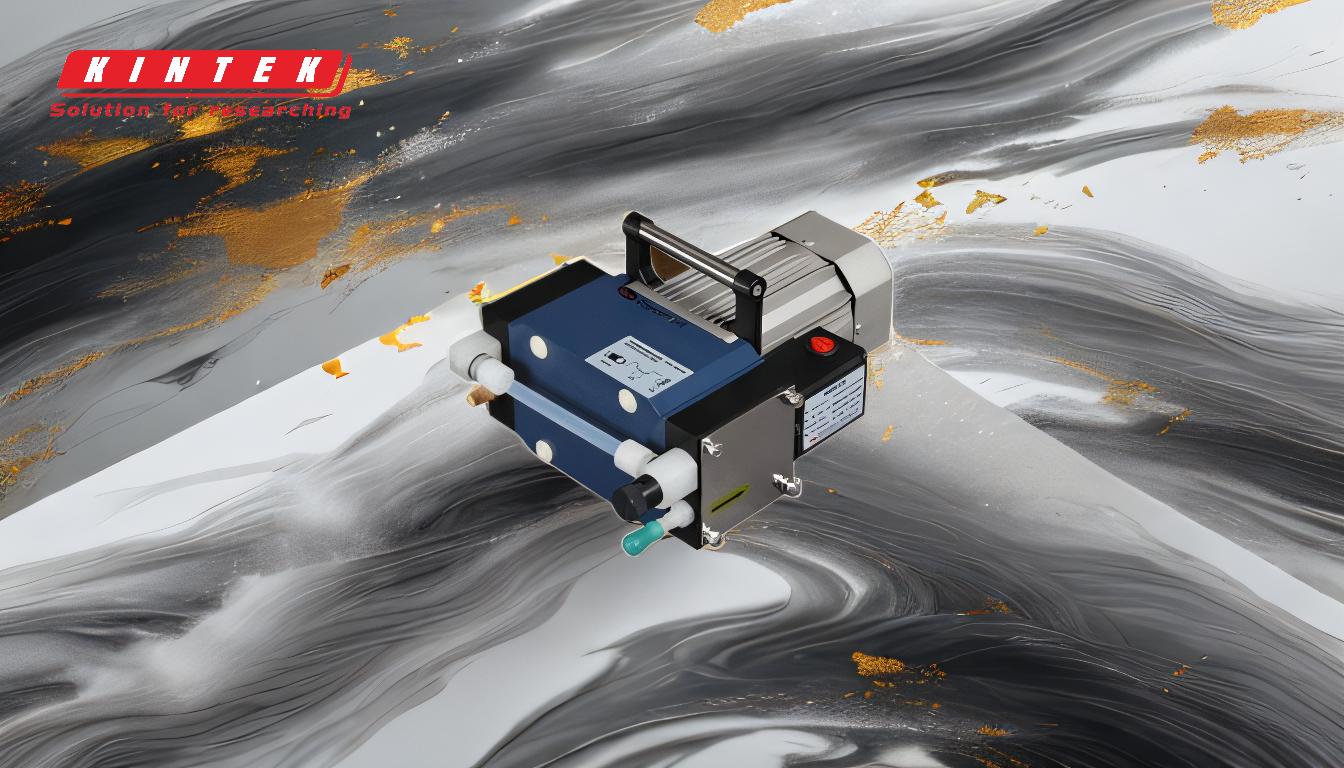The starting pressure for a diffusion pump is a critical factor in its operation, as it determines the conditions under which the pump can effectively begin creating a vacuum. Diffusion pumps are typically used in high-vacuum applications and require a specific pre-vacuum level to function properly. The starting pressure is usually in the range of 10^-2 to 10^-3 Torr (1 to 0.1 Pa), depending on the design and application of the pump. This initial pressure ensures that the pump's working fluid can vaporize and create the necessary pressure differential to start the pumping process. Below this pressure, the pump cannot operate efficiently, and above it, the pump may fail to achieve the desired vacuum level.
Key Points Explained:

-
Definition of Starting Pressure:
- The starting pressure for a diffusion pump is the minimum pressure required in the vacuum chamber before the pump can begin operating effectively. This pressure ensures that the pump's working fluid can vaporize and create the necessary pressure differential to start the pumping process.
- The starting pressure is typically in the range of 10^-2 to 10^-3 Torr (1 to 0.1 Pa), depending on the specific design and application of the pump.
-
Importance of Starting Pressure:
- The starting pressure is crucial because it determines the conditions under which the pump can begin creating a vacuum. If the pressure is too high, the pump may not be able to achieve the desired vacuum level. If the pressure is too low, the pump may not operate efficiently or may fail to start altogether.
- The starting pressure also affects the overall performance and efficiency of the diffusion pump. Operating the pump at the correct starting pressure ensures that it can achieve the desired vacuum level quickly and efficiently.
-
Factors Affecting Starting Pressure:
- Pump Design: Different diffusion pumps have different starting pressure requirements based on their design and the type of working fluid used. For example, pumps with higher boiling point fluids may require a lower starting pressure.
- Application: The specific application of the pump can also affect the starting pressure. For example, pumps used in high-vacuum applications may require a lower starting pressure than those used in low-vacuum applications.
- Pre-Vacuum Level: The pre-vacuum level, or the pressure in the vacuum chamber before the diffusion pump is turned on, is a critical factor in determining the starting pressure. The pre-vacuum level must be within the required range for the pump to operate effectively.
-
Measurement and Monitoring:
- The starting pressure is typically measured using a vacuum gauge, which monitors the pressure in the vacuum chamber. The gauge must be accurate and sensitive enough to detect the small pressure changes that occur during the pump's operation.
- Monitoring the starting pressure is important to ensure that the pump is operating within its specified range. If the pressure is too high or too low, adjustments may need to be made to the pre-vacuum level or the pump's operating conditions.
-
Common Issues and Solutions:
- High Starting Pressure: If the starting pressure is too high, the pump may not be able to achieve the desired vacuum level. This can be caused by a leak in the vacuum system, improper pre-vacuum level, or a problem with the pump's working fluid. Solutions include checking for leaks, adjusting the pre-vacuum level, or replacing the working fluid.
- Low Starting Pressure: If the starting pressure is too low, the pump may not operate efficiently or may fail to start altogether. This can be caused by a problem with the vacuum gauge, improper pre-vacuum level, or a problem with the pump's design. Solutions include checking the vacuum gauge, adjusting the pre-vacuum level, or consulting with the pump manufacturer.
-
Best Practices for Operating a Diffusion Pump:
- Proper Pre-Vacuum Level: Ensure that the pre-vacuum level is within the required range before starting the diffusion pump. This can be achieved by using a roughing pump or other pre-vacuum system.
- Regular Maintenance: Regularly inspect and maintain the diffusion pump to ensure that it is operating within its specified range. This includes checking for leaks, replacing the working fluid, and monitoring the vacuum gauge.
- Consult Manufacturer Guidelines: Always consult the manufacturer's guidelines for the specific starting pressure requirements and operating conditions for your diffusion pump. This will help ensure that the pump operates efficiently and achieves the desired vacuum level.
In summary, the starting pressure for a diffusion pump is a critical factor that determines the conditions under which the pump can begin creating a vacuum. The starting pressure is typically in the range of 10^-2 to 10^-3 Torr (1 to 0.1 Pa), depending on the design and application of the pump. Proper measurement and monitoring of the starting pressure, along with regular maintenance and adherence to manufacturer guidelines, are essential for ensuring the efficient operation of a diffusion pump.
Summary Table:
| Aspect | Details |
|---|---|
| Starting Pressure | 10^-2 to 10^-3 Torr (1 to 0.1 Pa) |
| Importance | Determines pump efficiency and ability to achieve desired vacuum levels |
| Key Factors | Pump design, application, and pre-vacuum level |
| Measurement | Monitored using a vacuum gauge |
| Common Issues | High or low starting pressure affecting performance |
| Best Practices | Maintain proper pre-vacuum level, regular maintenance, follow guidelines |
Need help optimizing your diffusion pump's performance? Contact our experts today for tailored solutions!














